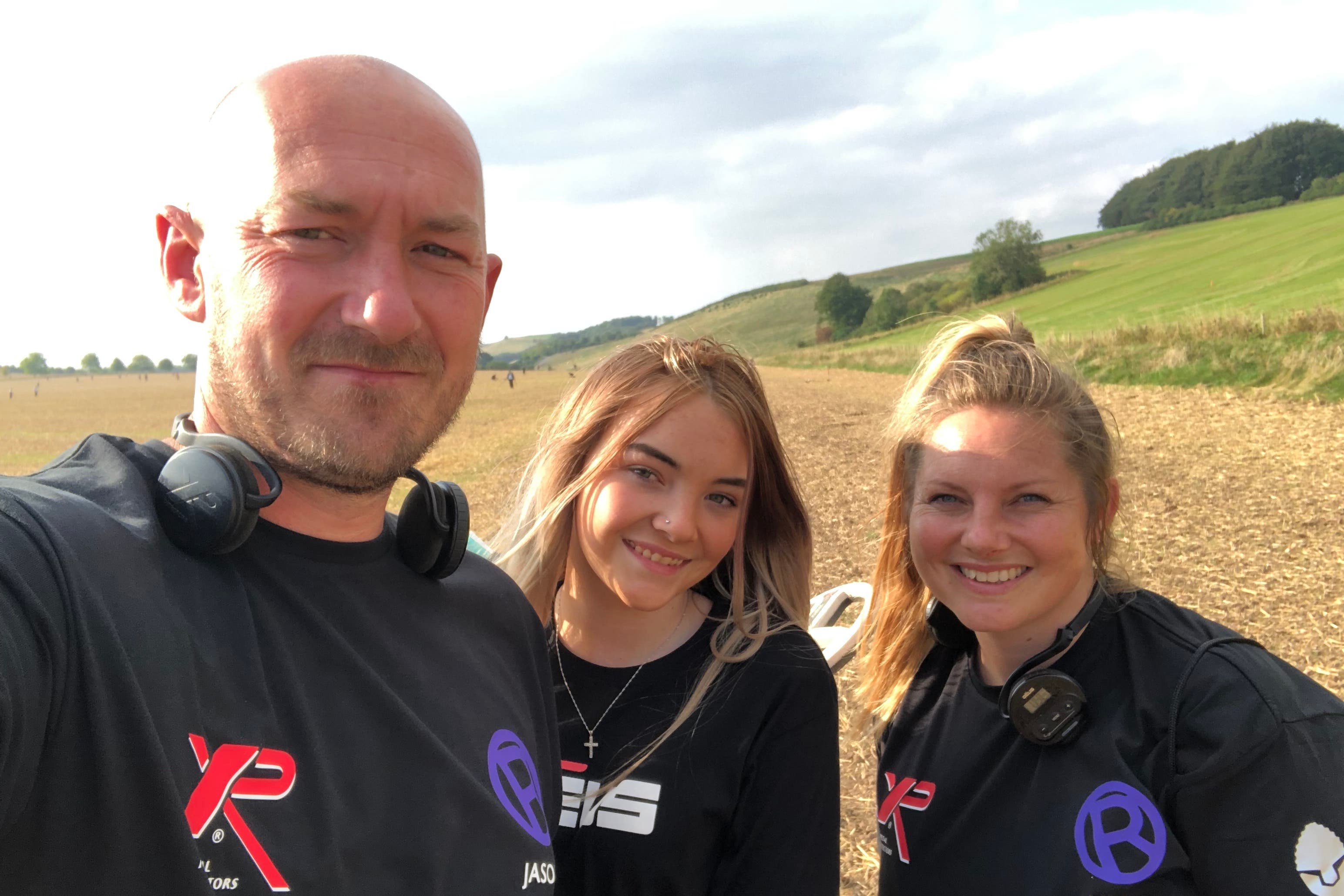Viking artefact unearthed by metal detectorist to be sold at auction
Jason Jones had previously found two medieval silver coins in the field in Norfolk.

A metal detectorist has unearthed a Viking artefact that was used to craft decorative motifs for military helmets.
Jason Jones, 44, of Norwich, made the find while searching a field near Watton in Norfolk in January this year, having previously found two medieval silver coins there.
The construction industry worker, who was with his wife Lisa, said he had forgotten to charge his main detector and was using his backup machine.
“I returned to the area where the coins were found and got a loud signal, and at a depth of just two inches found an unusual bronze object,” he said.
“Lisa came over and was speechless when she saw it.
“Neither of us had any idea what it could be, but that evening after posting a picture on Facebook we realised it was Viking in date and notified the local archaeologist to have it recorded.”
The bronze artefact, called a die, would have been used to create decorative motifs to be applied to a military helmet, according to Nigel Mills, specialist (coins and artefacts) at Noonans auctioneers, where it is to be sold.
“The die is used to replicate the design into a thin sheet of metal which is pressed into the die and then has the intricate design formed,” he said.
“This is called repousse and creates a lightweight decorative motif which can be applied to a military helmet.
“In this case it is likely to be the cheek guards or the nose guard.
“The helmet would be iron, and the decorative repousse plaque would be either copper or silver or gold, depending on the status of the recipient, and then applied to the helmet.
“You can see this decoration on important helmets like the Sutton Hoo helmet.
“It was identified as Viking on Facebook from the style which is typically Viking.
“The precise identification came later when the museum at Norwich examined it.”
He said that the die is of pressblech type, 14cm long, and tapers from 3.2cm to 2.6cm wide, weighing 186 grams.
The design is on one side in high relief.
“This is an intricate 11th century Urnes-style ornamentation possibly representing the world tree Yggdrasil with the monstrous serpent Nidhogg intertwining within its roots,” said Mr Mills.
“At the bottom is a fleur-de-lys which appears to form the tail of the serpent.
“The die would have been used to make a stamped foil of thin metal which would display the pressed-out image.
“From its find spot, the date and design it is possible that the die was used on a Viking iron helmet to make ornamentation to the cheek guards.”
It was in 1066 at Stamford Bridge in York that Harold II defeated the Viking invasion of King Hardrada of Norway, before being defeated by William of Normandy just three weeks later.
The die is to be offered for sale at Noonans Mayfair in London on July 18, with a guide price of £16,000 to £24,000.
Mr Jones said he bought a metal detector for his son Rio’s 15th birthday four years ago, and within a few weeks the whole family, including his two daughters Ela and Lia, were detecting every weekend.
He plans to share the money from the sale with the landowner, and to use his share to support his family.